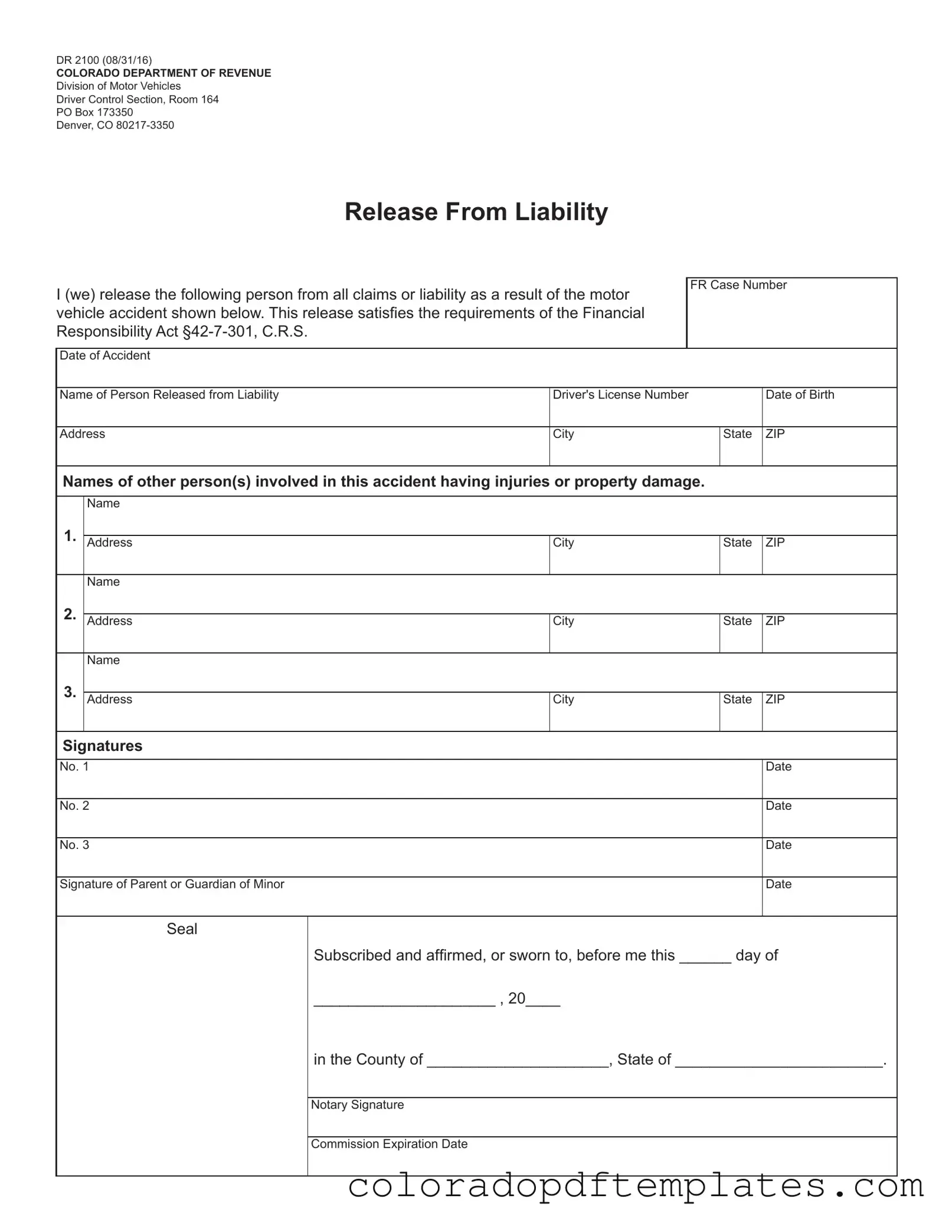The Colorado DR 2100 form is a legal document used to release an individual from liability following a motor vehicle accident. It is part of the requirements set by the Financial Responsibility Act in Colorado.
This form should be completed by individuals who were involved in a motor vehicle accident and wish to release another party from any claims or liability related to that accident.
The form requires several key pieces of information, including:
-
Date of the accident
-
Financial Responsibility case number
-
Name and contact information of the person being released from liability
-
Names and contact information of any other individuals involved in the accident
-
Signatures of the individuals releasing liability
Yes, the form must be notarized. This means a notary public must witness the signing of the document and provide their signature and seal.
What is the purpose of releasing someone from liability?
Releasing someone from liability means that you agree not to hold them responsible for any claims or damages resulting from the accident. This can help resolve disputes and avoid further legal action.
Once the form is signed and notarized, it is generally considered a binding agreement. Changing your mind may not be possible without mutual consent from all parties involved.
What should I do if I have more than three people involved in the accident?
If there are more than three individuals involved, you can list the additional names and contact information on a separate sheet of paper and attach it to the form.
The completed form should be submitted to the Colorado Department of Revenue, Division of Motor Vehicles, Driver Control Section. The address is provided on the form itself.
After submission, the form will be processed by the Department of Revenue. They may contact you if they need additional information or clarification regarding the accident.
It is advisable to submit the form as soon as possible after the accident. Delays may complicate the release process or affect any claims related to the incident.
